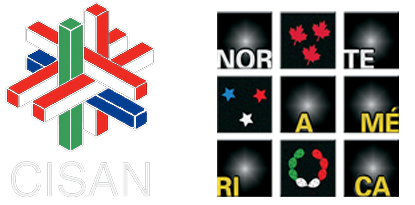Author Guidelines
NORMS FOR SUBMITTING MANUSCRIPTS
1. In the case of articles for the main sections, “Essays” and “Contemporary Issues”, manuscripts must have a minimum length of 15 pages, and a maximum of 30 pages.
2. All articles will include: a title, an abstract that is no longer than 100 words, and 4 to 6 keywords. The journal will translate these three elements from Spanish to English or vice versa.
3. In the case of texts for the “Reflections” section, the lengths will be as follows: 15 to 20 pages for ‘Interviews’, 10 to 15 pages for ‘Critical Notes’ 10 to 15 pages for ‘Bibliographical Notes’, and 20 to 30 pages for ‘Chronology’.
4. A page is understood as a double-spaced (not a space and a half) text printed on one side of a letter-sized (8.5 x 11 inch) sheet of paper in 12-point Times New Roman typeset, with an average of 1,680 characters.
5. On the first page of the manuscript, the title will be typed in bold and centered, and in the same sized font as the body of the text (12-point Times New Roman). Below the title, the author’s complete name, as it will be published, will be typed, justified to the right hand margin, and in the same size font as the text.
6. Notes that are part of the critical apparatus must also be presented in 12-point Times New Roman and double-spaced, preferably at the end of the text. They will be used exclusively for explanatory purposes, and not as bibliographical references.
7. If maps or other graphic elements will be included, they must be clearly presented, each on a separate sheet of paper, and each considered as one page when calculating the final length of the text. Tables and diagrams will also be presented in printed form, on letter-sized sheets of paper, as well as in electronic Word and Excel files, respectively, and will each be counted as one page in the final length of the text. The stipulation in point 30 will apply for authors living outside Mexico City.
8. No changes will be accepted once the manuscript has been received and the peer review process begun.
9. The Parenthetical Text Citation System (author, date) in its Harvard modality will be used for citing sources.
Example:
(Diamond, 1995: 49-59).
10. Bibliographies should also be presented according to the citation system specified in the above point 36. The order of presentation for books and articles will be strictly alphabetical, indexed according to the first last name of the first author of the publication.
11. Works will be presented in the Bibliography as follows:
a) In the case of books:
- First line: Last names, then first name of first author, then first and last names of other authors (in that order). When more than three authors, the abbreviation et al. will be used after the first author. Abbreviations will be used for editors (eds.), compilers (comps.) and coordinators (coords.).
- Second line: Year of publication, Title of manuscript (in italics), publisher, place of publication.
Example:
Diamond, Larry, Seymour Menton and Juan J. Linz, coords.
1995 Politics in Developing Countries: Comparing Experiences with Democracy, Reinner, Boulder, Colorado.
b) In the case of articles:
- First line: Last names, then first name of first author, then first and last names of other authors (in that order). When there are more than three authors, the abbreviation et al. will be used after the first author.
- Second line: Year of publication, “Title of article” (between quotation marks), name of journal (in italics) preceded by the word “in,” and when applicable, volume, issue number, month or indication of periodicity, place of publication (not obligatory) and page numbers of article.
Example:
Eckstein, Harry
1988 “A Culturalist Theory of Political Change,” in American Political Science Review, Vol. 1, No. 3, February, pp. 39-47.
c) In the case of chapters or articles from collective books:
- First line: Last names, then first name of first author, then first and last names of other authors (in that order). When there are more than three authors, the abbreviation et al. will be used after the first author. Abbreviations will be used for editors (eds.), compilers (comps.) and coordinators (coords.).
- Second line: Year of publication, “Title of the text” (between quotation marks), Title of publication (in italics), name or names of editors, coordinators or compilers, publisher, place of publication, pages of article.
Example:
Ribero, José
2000 “Reforma y desigualdad educativa en América Latina,” in Educación y pobreza: de la desigualdad social a la equidad, Marisela Sánchez, ed., El Colegio de México-UNICEF, Mexico City, pp. 189-235.
d) In the case of texts from electronic media:
- First line: Last names, then first name of first author, first and last names of other authors (in that order). When there are more than three authors, the abbreviation et al. will be used after the first author. Abbreviations will be used for editors (eds.), compilers (comps.) and coordinators (coords.)
- Second line: Year and month of publication, “Title of text” (in quotation marks), available at <web site> (between carrot brackets), consulted (date: month, day and year).
Example:
Audley, John
2003 February, “Opportunities and Challenges to Advance Environmental Protection in the U.S.-Central American Free Trade Negotiations,” available at <www.ceip.org/trade>, consulted May 7, 2003.
12. In all cases, complete names of authors must be given (first and last names).
13. It is indispensable that all bibliographic citations are complete.
14. The first time an acronym is used, it will be written between parentheses and preceded by the complete corresponding name.
Example: National Autonomous University of Mexico (UNAM).
15.- This journal uses anti-plagiarism software (CROSSCHECK) and screens all articles submitted before proceeding with publication.
Copyright Notice
Authors who publish with this journal agree to the following terms:
Authors retain copyright and grant the journal right of first publication with the work simultaneously licensed under a Creative Commons Attribution 4.0 International License (CC BY 4.0) that allows others to share and adapt the work for any purpose, including commercial use, with appropriate acknowledgement of the work's authorship and initial publication in this journal.
Authors are able to enter into separate, additional contractual arrangements for the non-exclusive distribution of the journal's published version of the work (e.g., post it to an institutional repository or publish it in a book), with an acknowledgement of its initial publication in this journal.
Authors are permitted and encouraged to post their work online (e.g., in institutional repositories or on their website) prior to and during the submission process, as it can lead to productive exchanges, as well as earlier and greater citation of published work.


